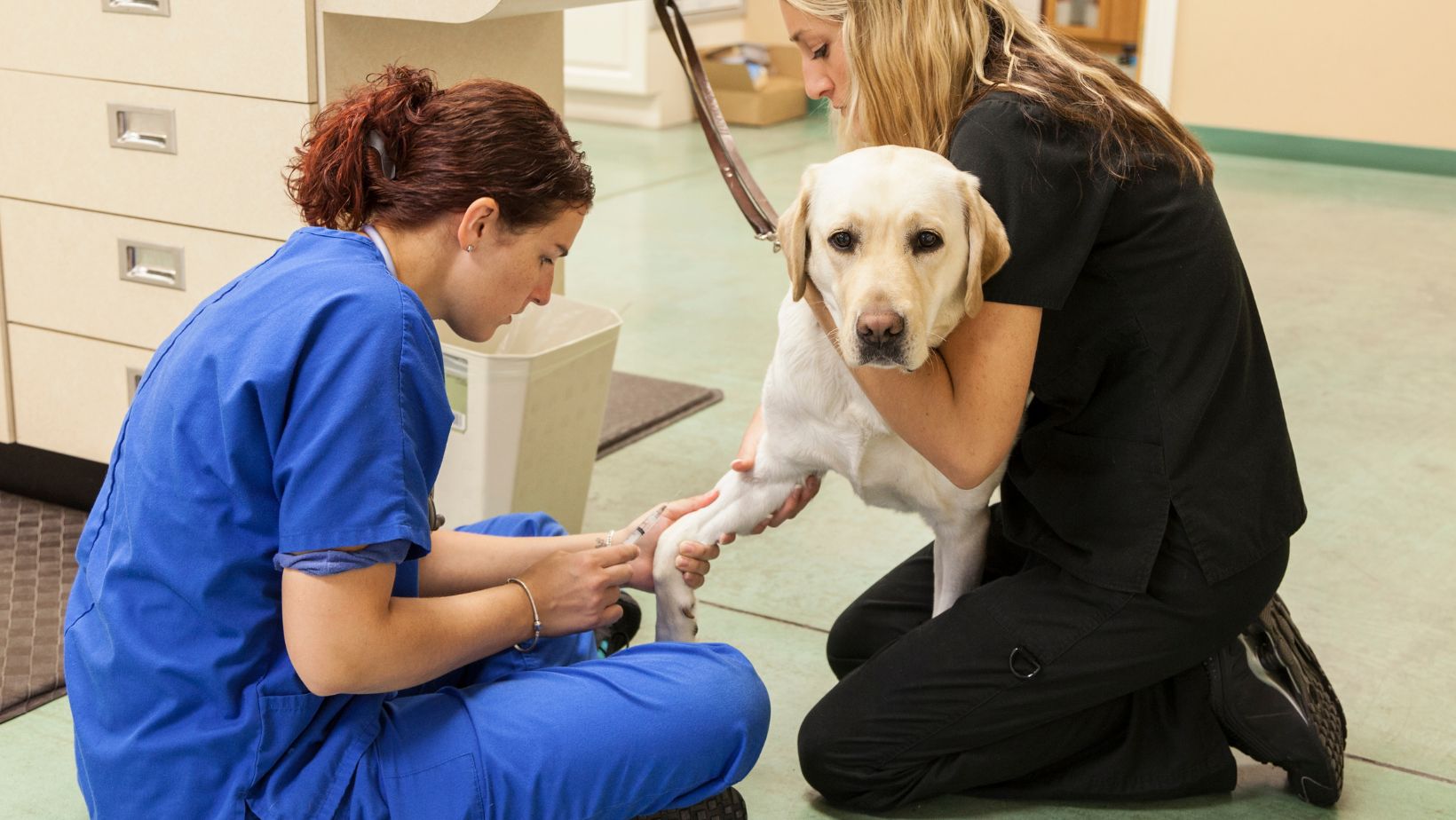How to Stop a Puppy from Whining When you Leave
Are you struggling with a Labrador puppy that whines incessantly when you leave? Don’t worry, I’ve got the solution for you! In this article, I’ll share some effective strategies on how to stop a puppy from whining when you leave specifically tailored for Labradors. With these tips, you can help your furry friend feel more secure and comfortable when they’re home alone.
Labradors are known to be incredibly social dogs, which can make it difficult for them to handle being left alone. Their whining can be a result of separation anxiety or simply wanting attention. The key is to address the root cause and provide them with the necessary tools to cope with your absence.
One important step in stopping your Labrador puppy from whining is gradually acclimating them to being alone. Start by leaving them alone for short periods of time and gradually increase the duration as they become more comfortable. Additionally, creating a safe and cosy space for them while you’re away can help alleviate their anxiety.
Stay tuned as I delve into specific techniques and tricks that will make your Labrador’s transition easier when you leave. By implementing these strategies consistently and patiently, you’ll soon have a well-adjusted pup who no longer feels the need to whine excessively every time you walk out the door.
Understanding the Whining Behavior
When it comes to dealing with a puppy who whines when you leave, it’s crucial to understand the underlying reasons behind this behavior. By gaining insight into what drives their whining, you’ll be better equipped to address and resolve the issue effectively. Let’s delve into some key factors that contribute to a Labrador puppy’s tendency to whine when left alone.
- Separation Anxiety: Labradors are known for their loyal and affectionate nature, which can sometimes lead to separation anxiety. This anxiety stems from the fear of being separated from their beloved humans and can manifest in various ways, including excessive whining. Understanding that your puppy may be experiencing separation anxiety is an essential first step towards finding a solution.
- Attention-seeking Behavior: Puppies are naturally curious and crave attention from their owners. When they realise that whining elicits a response or gets them the attention they desire, they may resort to this behavior as a way of seeking interaction or companionship. It’s important not to reinforce this behavior by giving in to their demands every time they whine.
- Lack of Exercise and Mental Stimulation: A tired puppy is generally a contented one. If your Labrador isn’t getting enough physical exercise or mental stimulation throughout the day, they may become restless and resort to excessive vocalization like whining as an outlet for pent-up energy or boredom.
- Fear or Discomfort: Whining can also indicate that your puppy is feeling scared or uncomfortable in certain situations, such as being left alone in an unfamiliar environment or encountering something new that triggers anxiety. Identifying potential triggers can help you address any underlying fears or discomforts your puppy may have.
- Unmet Needs: Sometimes puppies may vocalise their needs through whining if they’re hungry, thirsty, need to relieve themselves, or have any other unmet physical requirements. Ensuring that all these needs are met can help minimise their whining behavior.

Establishing a Routine
When it comes to stopping a puppy from whining when you leave, establishing a routine is key. Labradors, like many other breeds, thrive on structure and consistency. By creating a predictable schedule for your furry friend, you can help alleviate their anxiety and reduce their whining behaviour. Here are some steps to follow in order to establish an effective routine:
- Set consistent departure and arrival times: Dogs are creatures of habit, and they feel more secure when they know what to expect. Try to stick to the same times when leaving and returning home each day. This will help your Labrador understand that your departures are temporary and that you’ll always come back.
- Gradually increase alone time: Start by leaving your puppy alone for short periods of time, gradually increasing the duration as they become more comfortable. Begin with just a few minutes and slowly work your way up to longer intervals. This gradual approach allows them to adjust at their own pace without feeling overwhelmed.
- Provide mental stimulation before leaving: Boredom can often trigger whining in dogs. Before you head out, engage your Labrador in activities that stimulate their mind and tire them out physically. Puzzle toys, interactive games, or even obedience training sessions can keep their brains occupied while you’re away.
- Create a safe space: Designate a specific area where your puppy feels secure when left alone. It could be a crate or a cosy corner with their favourite bed and toys. Make sure this space is comfortable and inviting so that they associate it with positive experiences.
- Use positive reinforcement: Reward your Labrador whenever they remain calm during departures or arrivals. Positive reinforcement techniques such as treats or praise can reinforce the idea that being alone is nothing to fear.